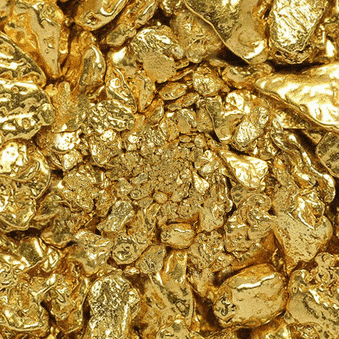The Upside of Investing In Gold Mining Stocks
It’s not hype. Honestly. In a major bull market in gold, if you invest in the right mining companies, you can ultimately make forty to fifty times your money. Maybe even more. Of course, there are no guarantees. You might make “only” twenty times your initial investment, in one mine or overall. And some mines might run into problems and turn out to be poor investments.
When it comes to investing in gold, I’ll admit that my personal preference runs to focusing on junior miners. The best-situated miners offer the greatest leverage to gold’s gains. They’re easy to buy. Some even pay a dividend. You have a range of choices, from the more speculative junior miners to large-cap companies with a proven record of production. Even if you want to own physical gold bullion, I’d suggest investing in some miners as well.
The key, of course, is to pick the right miners, and to be sufficiently diversified among them so that if one or two don’t pan out, you’ll still win big. Identifying the right junior miners isn’t a matter of luck. This article contains sensible guidelines for evaluating miners of all sizes for both safety and potential.

What To Look For… Rule #1
An essential rule when evaluating mining companies is to have knowledge of, and confidence in, the experience, knowledge, and integrity of its leaders. That’s important in any investment, of course. But it’s particularly critical with junior miners, because so much of what will determine their success is, literally, concealed deep underground. Above all, I look for miners whose bosses have great long-term records in the industry.
Rule #2
A second guideline is to focus on junior miners operating in geopolitically safe regions, keeping them shielded from chaos or threats of government expropriation. That narrows the field, but – with an occasional exception – it’s not worth incurring the risks of investing in regions that are particularly vulnerable to violence or other types of disruption. Of course, to some extent, this is a moving target. Chile, for instance, is blessed with natural resources and until recently was considered one of the most politically stable countries in South America. But the large-scale protests that have recently erupted there have modified that calculus.
In the end, with the miners as with any investment, you’re weighing risks against potential rewards. In the case of any mining stock, the potential rewards range from big to mega-big, while the risks are well measured and well worth taking.
When seriously considering investing in a mining company, keep in mind there are three basic categories:
JUNIOR MINERS
MID-CAP MINERS
LARGE-CAP MINERS
Investing In Junior Miners
The gold investments with the biggest potential rewards are the small mining companies known as junior miners. These are companies that own or have significant stakes in properties known to contain gold and often other precious metals but haven’t yet started mining operations. Many are still in the midst of the long and multi-stage process of obtaining necessary environmental permits, an inescapable task for any miner. Because they are not yet generating earnings, they may need to seek funding to keep the process going, to build the necessary infrastructure, and to conduct exploratory operations to determine the likely potential of their holdings.
But if investing in junior miners seems to require a certain degree of faith, the key is to make sure it’s not blind faith. Some junior miners will fall by the wayside, but the ones that make it will reward you many times over, greatly leveraging the rise in gold itself.
These are companies in which you can make multiples of your initial investment in a gold bull market as they go from money-losing companies to producers, in some cases achieving the ranks of major producers. To cut the risk factor, focus on miners with assets in politically safe regions. Even at current gold prices, each would be profitable shortly after beginning mining operations because costs of production, at below $1,000 per ounce, are far lower than what they’d get for their gold sales.

Mid-Cap Miners
The middle of the pack includes miners that are neither big nor small. But that doesn’t mean boring or mediocre. Look for mining companies that have established strong track records in every metric that counts, from increased production to rising reserves to earnings. Potentially, some may even pay a dividend. While their potential gains are likely less spectacular than for the juniors, a majority have a well-measured long-term target. It’s important the Mid-Cap Miner has a strong balance sheet, so that even if gold were to back off to $1,000, they’d still have enough cash to continue to generate growth in their reserves and resources. For investors, these medium-sized producers offer a nice trade-off: less speculative than the juniors but more upside potential than the majors.
Big-Cap Miners
For the greatest leverage to rising gold prices, the junior miners are your ticket. But there’s nothing wrong with owning the large-cap more established miners, either instead of the juniors, depending on how aggressive an investor you are, or alongside them. As with everything, there are trade-offs.
Leverage to rising gold prices comes from the ability to increase production, and the juniors by definition will be increasing production since they are starting from no production. The bigger-caps will struggle to raise production and may actually see production start to decline. Still, as gold prices rise, the gold they continue to produce will bring in more money and generate rising profits. And because of their larger size, the bigger mining companies offer greater safety in the event of some out-of-the-blue catastrophic event.
Mining ETFs
An alternative way to invest in miners is an ETF that tracks the industry. Listed below are two examples of ETFs that track gold miners.
VanEck Vectors Gold Miners ETF trades on the NYSE under the symbol GDX and encompasses 45 gold stocks including the major miners. Because it is weighted according to capitalization, the biggest miners count most. The three biggest – Newmont Goldcorp, Barrick, and Franco-Nevada – together account for roughly 30 percent of the ETF.
The second ETF is VanEck Vectors Junior Gold Miners ETF, which trades on the NYSE under the symbol GDXJ. While it has “junior” in its name, the VanEck ETF defines junior miners differently from common perception. Typically, a junior miner is one that hasn’t yet begun production. GDXJ, however, also includes some small miners that are already producing.
Wrap Up
So, there you have it. Some investors may feel more comfortable investing in gold mining companies, while others may opt to invest in owning mining ETF stocks that track the gold industry.
The top performing gold mining companies that I highly recommend can be found in my latest book…
Now available on Amazon, Kindle and Audible!

















